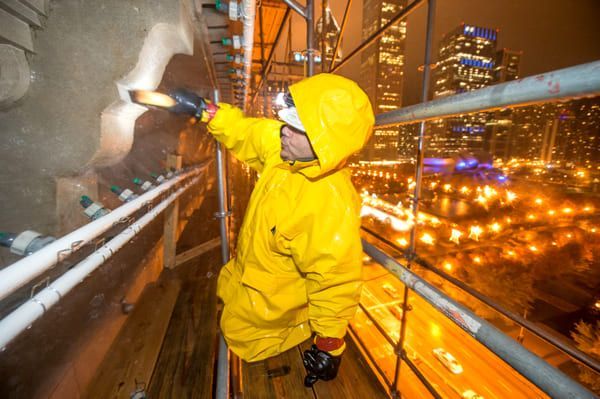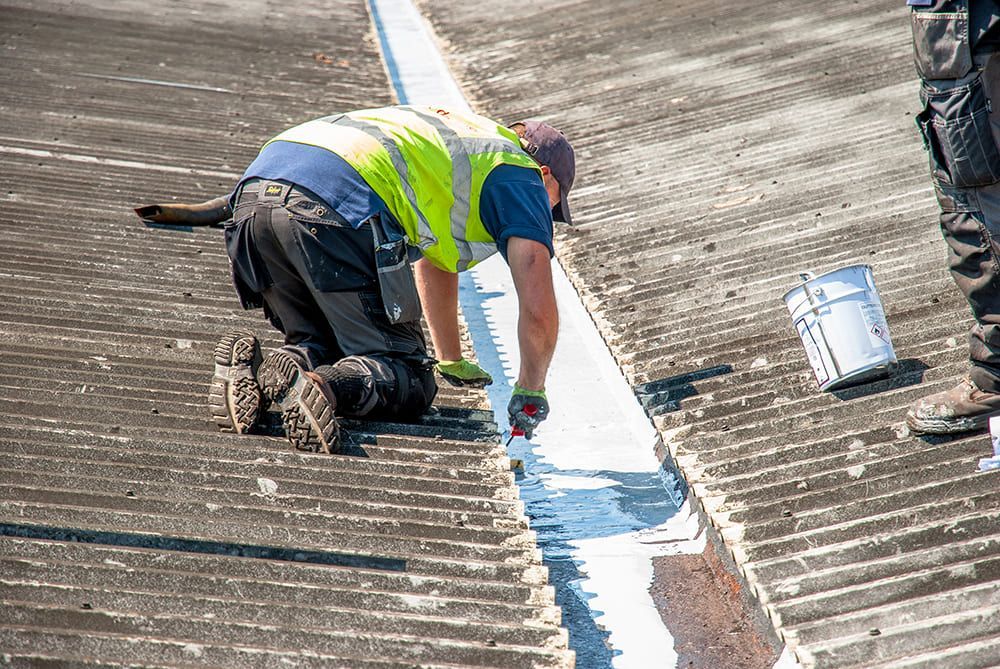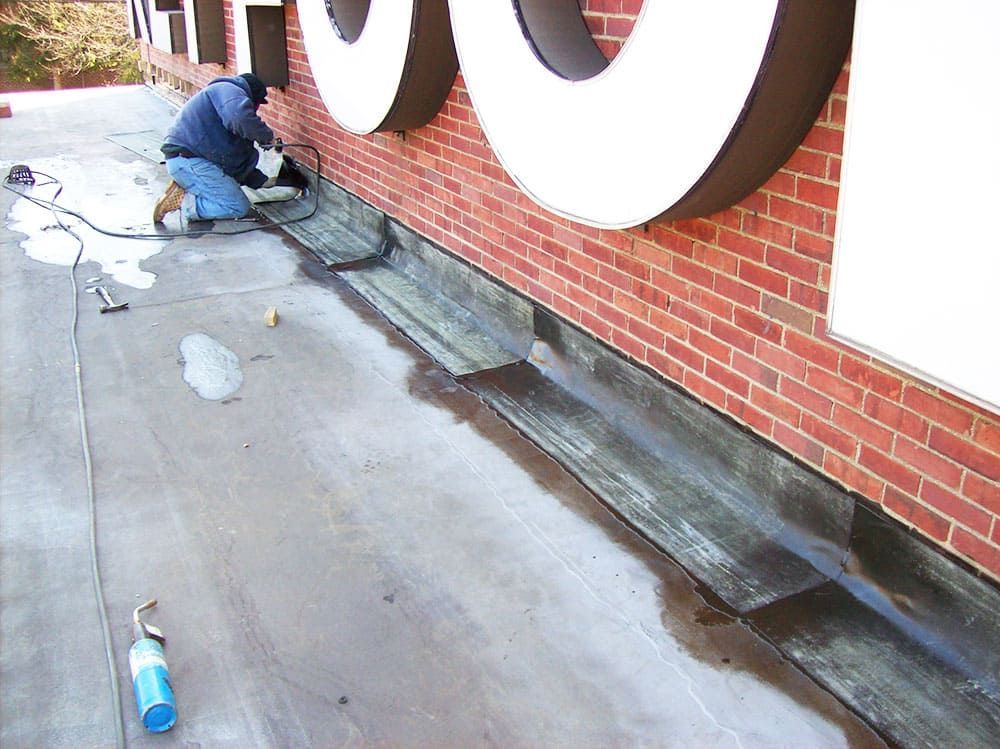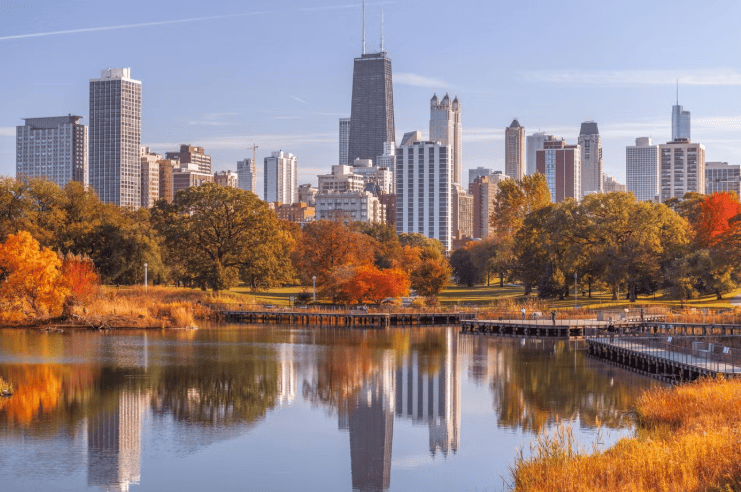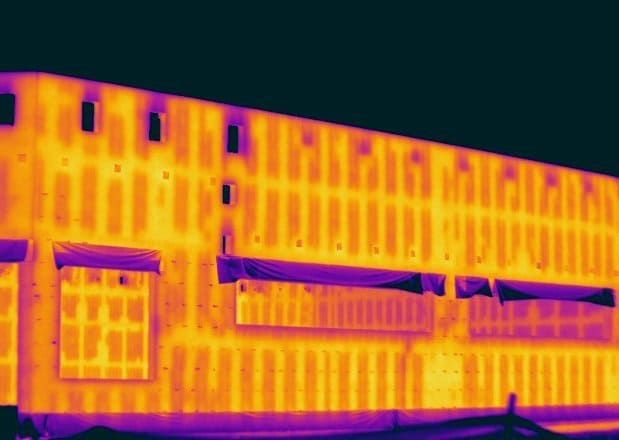When freezing temperatures hit Chicagoland, masonry structures (especially older or previously patched systems) can take a beating. While a few minor cracks might seem harmless in September, those same cracks can evolve into structural risks come February. For property managers, facilities teams, and project leads overseeing commercial portfolios, understanding how to respond to masonry damage during extreme weather is critical.
Why Cold Weather Worsens Masonry Issues
Masonry materials (brick, stone, mortar, and concrete) are all porous. When moisture enters these materials and freezes, it expands by approximately 9%. That repeated freeze-thaw cycle stresses the system, leading to cracking, spalling, displacement, and, in some cases, falling material.
ScienceDirect states that concrete subjected to early-age freeze-thaw cycles can suffer significant physical damage, leading to degradation of its mechanical properties and durability.
Early signs include:
- Discoloration or efflorescence (a white, chalky deposit)
- Cracked or crumbling mortar joints
- Delaminated or spalling brick and concrete
- Movement in facade elements, including lintels or coping stones
First Steps When Damage is Spotted
When emergency masonry issues appear, timing matters. Delays can lead to costlier repairs and, more importantly, safety hazards. Here's how to act fast without cutting corners:
- Secure the Area - If there’s any chance of falling material, rope off the affected zone and post signage. This protects tenants, maintenance staff, and pedestrians.
- Document the Damage - Take high-resolution photos of the issue from multiple angles. Include wide shots and detailed close-ups. This documentation can help with insurance claims, internal reporting, and repair planning.
- Contact a Qualified Contractor - Reach out to a commercial masonry restoration contractor with specific cold-weather expertise. Not all contractors are equipped to handle emergency stabilization and repairs in freezing conditions.

Cold-Weather Repairs: What’s Actually Possible?
Contrary to common belief, many masonry repairs can be performed safely and effectively during winter with the right methods and materials. Here’s what that might include:
- Heated enclosures to maintain working temperatures for mortar or patching compounds
- Cold-weather mortars or rapid-set materials designed to cure at low temps
- Commercial sealant repair methods using elastomeric sealants formulated for winter flexibility
- Temporary stabilization techniques, including bracing or epoxy injections, until a full repair is possible in warmer weather
We’ve performed emergency commercial concrete facade repair in January, under tarps, with continuous heat and temporary enclosures. These aren’t ideal conditions, but they’re safe and effective when the situation demands immediate action.

When It’s More Than Cosmetic
Sometimes, what appears as surface damage reveals deeper structural concerns. In cases involving shifting lintels, exposed reinforcing steel, or vertical cracking through multiple courses of masonry, we often recommend bringing in a structural engineer to assist in determining scope.
We’ve partnered with engineering firms on many concrete balcony restoration and masonry lintel repair projects where temporary shoring and facade openings were required. Waiting until spring wasn't an option.
Preventing Future Emergencies
The best emergency is the one that never happens. Here are ways to reduce the risk of cold-weather masonry failures:
- Schedule annual inspections, especially in late summer or early fall.
- Pay attention to high-risk areas: parapet walls, balconies, and facades with complex movement joints.
- Address deferred maintenance such as commercial masonry tuckpointing work before freeze-thaw sets in.
- Track water infiltration issues year-round. If you’re chasing leaks in the summer, those will turn into cracking problems in the winter.
According to FMX, It is estimated that preventive maintenance can save companies between 12-18% over reactive maintenance, a ratio that rings especially true in masonry.

Call RestoreWorks Before Small Issues Become Emergencies
At RestoreWorks, we specialize in diagnosing, stabilizing, and repairing masonry damage under tight timelines and difficult weather conditions. Our team has decades of experience navigating complex issues in occupied buildings, commercial campuses, and historic properties throughout Chicagoland.
Whether you're dealing with a failed lintel, an exposed balcony, or the sudden appearance of spalling brick, we’re ready to respond. If you suspect winter has taken a toll on your building envelope, contact our team today for a site review and recommendations.




